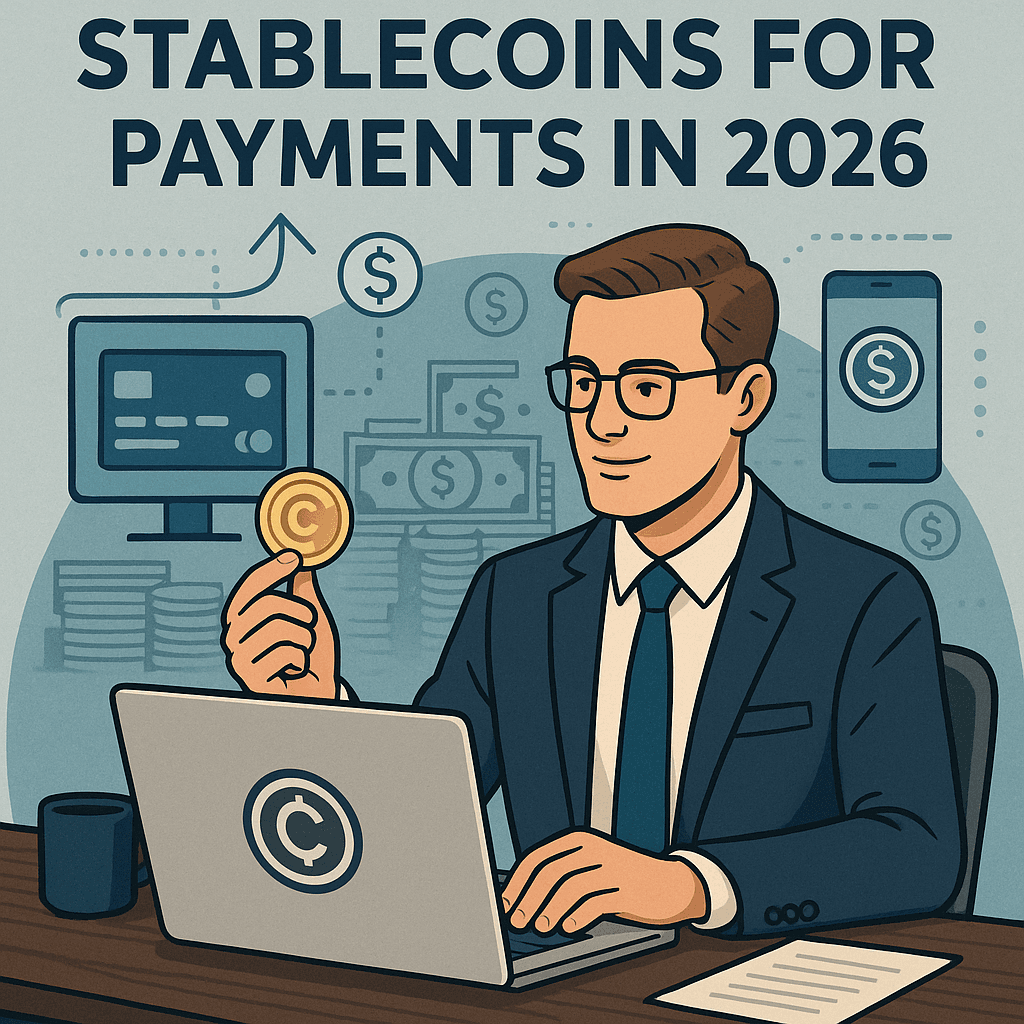Why Latin America Dominates Global Stablecoin Adoption (4 Countries in Top 20)
Latin America has become the undisputed global leader in stablecoin adoption, with four countries ranking in the top 20 worldwide: Brazil (#9), Mexico (#13), Venezuela (#14), and Argentina (#15). This isn't just about technology, it's about economic survival driving the fastest financial transformation in modern history.
The numbers are staggering: 71% of Latin American users report using stablecoins for cross-border transfers, compared to just 49% globally. More importantly, 75% of financial institutions note growing customer demand for stablecoin-based products, while traditional remittance giants like Western Union face a 22% decline in app downloads.
Latin America leads stablecoin adoption because of currency instability, high remittance costs (6-10% fees), and limited banking access. Countries like Argentina (276% inflation) and Venezuela use stablecoins to preserve wealth and send money internationally at 80% lower costs than traditional banks.
The $170 Billion Remittance Market Transformation
Traditional Remittance Costs Are Destroying Families
Latin America receives $170 billion annually in remittances, money that families depend on for survival. Yet traditional services are bleeding these families dry:
Average fees: 6-10% of every transaction
Small payments under $200: 15-20% in fees
Settlement time: 1-3 business days
Hidden FX markups: 2-4% above market rates
Real Impact: A Mexican worker sending $300 to family pays $30-60 in fees using Western Union. The same transaction via stablecoins costs under $0.01.
How Stablecoins Cut Remittance Costs by 80%
Stablecoin vs Traditional Banking Cost Breakdown:
Payment Method | $500 Transfer | Time | Hidden Fees |
Western Union | $35-50 (7-10%) | 1-3 days | Yes |
Traditional Bank Wire | $25-50 + FX markup | 1-3 days | Yes |
Stablecoin (USDC/Solana) | $0.01 | 5 seconds | None |
This 80% cost reduction translates to billions in savings for families across Latin America.
Country-by-Country Stablecoin Adoption Analysis
🇦🇷 Argentina: The Stablecoin Capital of the World
Why Argentina Leads:
Inflation rate: 276.40% (May 2024)
Peso devaluation: 51.6% in 12 months
Stablecoin market share: 61.8% vs 44.7% global average
Real Usage: "You can walk up to any Argentinian person and ask how many pesos to a dollar, and they'll know. As crypto adoption has grown, lots of people here will now get their paycheck and immediately put it into USDT or USDC."
Data Proof: When the peso fell below $0.002 in December 2023, stablecoin trading volume exceeded $10 million the following month.
🇧🇷 Brazil: Institutional Infrastructure Leader
Market Size: $6 billion in crypto trading volume (30% YoY increase)
Innovation Leadership: Brazil launched BRL1, a real-backed stablecoin by Mercado Bitcoin, Foxbit, Bitso, and Caivest, enabling direct exchange flows without USD conversion.
Growth Trajectory: YoY stablecoin transaction value on local exchanges grew 207.7%.
🇨🇴 Colombia: Banking Integration Success Story
Breakthrough: Bancolombia (national bank) launched Wenia platform with:
Bitcoin, Ether, and USDC trading
COPW: Colombian peso-backed stablecoin
Direct integration with traditional banking
Market Impact: Colombia's digital payments projected to reach $140 billion by 2032.
🇲🇽 Mexico: The $63.3 Billion Remittance Corridor
Market Leadership:
Largest remittance receiver in LATAM
$63.3 billion received in 2024
4% of Mexico's GDP from remittances
Mobile Innovation: Platforms like Bankaya, Mercado Pago, and Spin now process remittances via mobile-to-mobile transfers at significantly lower costs.
Why Traditional Banks Cannot Compete (Infrastructure Analysis)
The $10 Trillion Capital Trap
Traditional banks lock up $10 trillion in Nostro/Vostro accounts for cross-border payments. This creates massive inefficiency:
Traditional Banking Constraints:
Pre-funded accounts across multiple countries
T+2 to T+3 settlement creates liquidity drag
Business hours only (no weekend/holiday processing)
Multiple intermediary fees compound costs
Stablecoin Infrastructure Advantages:
Instant settlement (seconds, not days)
24/7/365 operations (no banking hours)
Direct peer-to-peer transfers (no intermediaries)
Programmable yield generation during transit
Real-World Speed Comparison
SWIFT Wire Transfer:
Time: 1-3 business days
Cost: $25-50 + FX markup
Transparency: Limited tracking
Hours: Banking hours only
Stablecoin Transfer (USDC/Solana):
Time: Under 5 seconds
Cost: Less than $0.01
Transparency: Full blockchain record
Hours: 24/7/365
The Technology Revolution: Programmable Money Infrastructure
Beyond Faster Payments: Yield-Generating Transfers
Modern stablecoin infrastructure enables capabilities impossible with traditional systems:
Instant Yield Generation: Earn 6-9% APY on funds during transfer
Conditional Smart Contracts: Milestone-based releases for trade finance
Cross-Chain Interoperability: Seamless operations across blockchains
Automated Compliance: Travel Rule data embedded on-chain
Reversible Transfers: Cancellation windows prevent costly errors
Business Impact Example: A company using programmable stablecoin infrastructure can:
Generate yield on payment float
Reduce operational costs by 60%
Eliminate reconciliation errors
Operate across time zones without delays
The Infrastructure Layer That Makes It Possible
Companies like RebelFi build the infrastructure layer that enables traditional businesses to access these capabilities without blockchain expertise, transforming payment processing from a cost center into a revenue-generating operation.
Market Size and Explosive Growth Trajectory
Current Market Scale (2025 Data)
Stablecoin Market Overview:
Total market cap: ~$255 billion
Daily transaction volume: $20-30 billion
Annual transfer volume: $27.6 trillion (exceeds Visa + Mastercard combined)
Tether (USDT) dominance: $143 billion market cap
Circle (USDC): $58+ billion market cap
Latin America Specific:
Regional stablecoin flows: $146 billion (2022)
Growth rate: 25X increase over 30 years
Remittance percentage: 3% of $200 trillion global cross-border payments
Growth Projections: The $2 Trillion Opportunity
Treasury Secretary Scott Bessent's Projection: US stablecoin market could grow 8X to over $2 trillion in coming years.
Adoption Acceleration Metrics:
2023 regulatory barriers: 41% cited uncertainty
2025 regulatory barriers: Only 14% cite lack of expertise
Infrastructure readiness: 86% have partnerships in place
Technical capability: 71% report infrastructure ready
Regulatory Tailwinds Accelerating Adoption
The GENIUS Act: Federal Framework Changes Everything
Key Regulatory Developments:
US GENIUS Act: First federal stablecoin regulation (passed June 2025)
EU MiCA: Operational framework providing clarity
Singapore: Finalized regulatory framework (August 2023)
Japan: Payment Services Act covers stablecoins
Hong Kong: Stablecoin Bill expected early 2025
Latin America Regulatory Advantage:
Only 29% cite regulatory uncertainty (vs 41% globally)
7% lack internal expertise (lowest globally)
85% view regulations as "green lights" not barriers
Infrastructure Investment Surge
Major Corporate Moves:
Stripe acquired Bridge for stablecoin infrastructure
Visa launched bank stablecoin platform
PayPal PYUSD processing business transactions
JPMorgan Euro JPM Coin with Siemens as first client
Amazon and Walmart reportedly considering stablecoin issuance
Business Model Disruption: From Cost to Revenue
Traditional Payment Processing: Pure Cost Center
Legacy Model Problems:
Wire fees: $25-50 per transaction
FX markups: 2-4% hidden in exchange rates
Settlement delays: 1-3 days capital inefficiency
Operational overhead: Manual reconciliation and error correction
Stablecoin Infrastructure: Revenue Generator
New Model Benefits:
Yield on Float: Generate 6-9% APY during settlement
FX Optimization: Intelligent routing reduces conversion costs
Operational Efficiency: Automated smart contract workflows
Capital Optimization: No pre-funded correspondent accounts needed
ROI Example: A fintech processing $100M annually could:
Save $2-4M in traditional fees
Generate $500K-900K in yield on float
Reduce operational costs by 40%
Improve cash flow with instant settlement
Challenges and Realistic Limitations
Remaining Friction Points
Currency Conversion Reality:
USD stablecoins still require FX conversion to local currencies
Local stablecoin adoption varies by country
Regulatory compliance adds complexity in some jurisdictions
Network Fees:
Variable transaction costs during network congestion
Though typically under $0.01, fees can spike during high usage
Integration Complexity:
Traditional banking system interfaces still required
Compliance frameworks need development
User education and adoption curves
Infrastructure Solutions
These challenges are being addressed through:
Multi-chain infrastructure reducing network congestion
Layer 2 solutions minimizing transaction costs
Regulated stablecoin on/off ramps simplifying compliance
API-first platforms enabling traditional system integration
The Future: 2025-2030 Projections
Corporate Stablecoin Wave
Major Corporations Moving:
Amazon, Walmart exploring proprietary stablecoins
$14 billion annually in card processing fees to eliminate
Fortune 500 companies: 47% have on-chain initiatives
SMBs: 81% interested in stablecoin business applications
Banking Industry Transformation
Traditional Banks' Response:
Bank of America: Ready to launch dollar-backed stablecoin
Wells Fargo: Piloted blockchain faster than SWIFT
Standard Chartered: Hong Kong dollar stablecoin joint venture
Japanese banks (MUFG, SMBC, Mizuho): Joint stablecoin pilot
Infrastructure Layer Expansion
Next-Generation Capabilities:
AI-driven treasury optimization
Cross-chain DeFi integration
Programmable compliance automation
Real-time financial reporting
Tokenized asset integration
Actionable Insights for Businesses
For Financial Institutions
Immediate Actions (0-90 days):
Assess stablecoin strategy - issue own or partner
Evaluate infrastructure partners for rapid deployment
Pilot cross-border payments in high-volume corridors
Update risk frameworks for digital asset operations
Strategic Positioning (90-365 days):
Launch stablecoin custody services
Integrate yield-generating partnerships
Deploy programmable payment features
Expand to multiple blockchain networks
For Businesses Using Cross-Border Payments
Cost Analysis Framework:
Calculate current remittance/wire costs (include hidden FX)
Identify payment volume and frequency
Evaluate stablecoin infrastructure options
Pilot with small transactions before scaling
Implementation Checklist:
Identify stablecoin infrastructure provider
Set up compliant custody solution
Test cross-border payment flows
Train finance team on new processes
Scale operations and optimize yields
Expert Predictions and Industry Outlook
Market Leaders' Insights
Treasury Secretary Scott Bessent: "The U.S. stablecoin market could grow eightfold to over $2 trillion in coming years."
VanEck Research: Western Union saw 22% decline in app downloads while MoneyGram suffered 27% reduction - traditional remittance is losing to stablecoin infrastructure.
Fireblocks Data: Over $1.5 trillion in stablecoin transaction volume in 2024 alone, representing more than half of all digital assets moved across their platform.
The Inevitable Transformation
Why This Change Is Unstoppable:
Economic necessity in high-inflation economies
Superior technology (speed, cost, programmability)
Regulatory clarity removing adoption barriers
Network effects accelerating as more participants join
Corporate adoption by major institutions validates the model
Conclusion: The Future of Money Has Arrived in Latin America
Latin America's stablecoin adoption isn't a regional experiment, it's the future of global finance being stress-tested in real-world conditions. Economic necessity has forced innovation that solves fundamental problems with cross-border payments, and the results speak for themselves:
The Transformation Is Measurable:
80% cost reduction vs traditional remittances
Instant settlement vs 1-3 day delays
24/7 operations vs banking hours only
Yield generation vs idle capital
Full transparency vs opaque fee structures
The Network Effect Is Accelerating: As regulatory frameworks solidify and infrastructure matures, adoption is becoming exponential. Every new participant makes the network more valuable for everyone else, a dynamic impossible with traditional closed-loop payment systems.
For Businesses Still Using Legacy Rails: The question isn't whether to adopt stablecoin infrastructure, but how quickly you can implement it before competitors gain an insurmountable advantage in cost structure and operational efficiency.
The Future Is Programmable Money: Latin America has proven that when payments can generate yield, settle instantly, and operate with full transparency, traditional banking infrastructure becomes obsolete. The institutions building or integrating with modern stablecoin infrastructure today will define how money moves globally tomorrow.
The transformation from traditional FX fees to programmable money infrastructure isn't coming, it's here. Latin America is leading the way, and the rest of the world is following.
Frequently Asked Questions
Q: Why is stablecoin adoption higher in Latin America than other regions?
A: Currency instability, high inflation (276% in Argentina), expensive remittances (6-10% fees), and limited banking access create urgent demand for alternative financial infrastructure.
Q: How much can businesses save using stablecoins vs traditional banking?
A: Up to 80% cost reduction on cross-border payments, plus yield generation (6-9% APY) on payment float, with instant settlement vs 1-3 day delays.
Q: Are stablecoins regulated in Latin America?
A: Yes, increasingly so. Only 29% of Latin American institutions cite regulatory uncertainty as a barrier (vs 41% globally), with clear frameworks emerging across major economies.
Q: What infrastructure is needed to use stablecoins for business payments?
A: Modern platforms like RebelFi provide APIs that integrate with existing systems, handling custody, compliance, and yield optimization without requiring blockchain expertise.
Q: Will traditional banks be replaced by stablecoin infrastructure?
A: Banks are pivoting to integration rather than competition, Bank of America, JPMorgan, and others are launching their own stablecoins and partnering with infrastructure providers.
This analysis is based on 2024-2025 market data from leading research firms, central banks, and stablecoin infrastructure providers. For businesses considering stablecoin integration, consult with qualified financial and technology advisors for implementation guidance.



